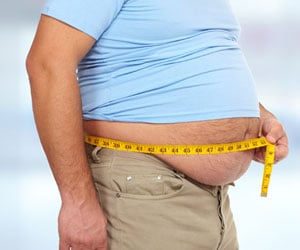Careful protocol and monitoring are necessary because commercial pilots can work long shifts, with multiple short haul flight sectors, or a single long haul sector.

‘Commercial pilots with diabetes treated with insulin must demonstrate excellent control and understanding of their diabetes to gain a Class 1 Medical Certificate.’





A comprehensive protocol, developed by a panel of medical and aviation experts, governs the medical certification of insulin-treated pilots. Ireland joined the UK in April 2015 in applying an agreed Medical Assessment Protocol under the European Aviation Safety Agency (EASA) regulation. Certificated pilots are subject to strict requirements, directly overseen by the UK Civil Aviation Authority (CAA) and Irish Aviation Authority (IAA) medical departments, including pre- and in-flight blood glucose monitoring. This study aimed to evaluate the early experience and safety of the UK program.With the pilots' consent, the files for all insulin-treated, Class 1-certificated pilots were reviewed and data were collected. This included: age; date of issue of Class 1 Medical Certificate; diabetes type and duration; diabetes management regimen; co-morbidities; diabetes complication monitoring; all available HbA1c values (a measure of blood sugar control) pre- and post-license issue; and all flights undertaken with associated blood glucose monitoring values. Average pre- and post-license HbA1c values were compared. Pre and in-flight blood glucose monitoring values were correlated against the CAA-specified "Green" (5-15mmol/l), "Amber" (4-5 and 15-20mmol/l), and "Red" (<4 or >20mmol/l) ranges.
The researchers found that at the analysis date, 26 insulin-treated pilots had been issued with Class 1 medical certificates. All were male, with an average age of 41 years. The majority (85%) had type 1 diabetes, with an average diabetes duration of 8 years. Average follow-up duration post-license issue was 19.5 months. The average pre-license issue HbA1c was 53.1mmol/mol; the average of the most recent HbA1c was 54.8mmol/mol, thus showing no significant change.
A total of 8,897 blood glucose monitoring values had been recorded during 4,900 flight hours. For short and medium haul flights (under 6 hours), 96% of 7,829 blood glucose monitoring readings were within the 'green' range. For long-haul flights (over 6 hours), 97% of 1,068 readings were within the 'green' range. A total of 19 (0.2%) readings across short and long haul flights combined were in the 'red' range and to date, no pilot medical incapacitation due to low or high blood sugar has been reported.
Dr Hine says: "A growing number of insulin-treated pilots have successfully applied for Commercial Pilots' Licenses in the UK and most recently Ireland. To date, the CAA protocol has shown to work well in the cockpit, with no reported safety concerns, and without deterioration of diabetes control."
Advertisement
If commercial pilots are already licensed and develop diabetes after getting their license, these pilots can apply for a Class 1 Medical certificate under the protocol described for insulin-treated pilots. They must show that they have excellent control of their diabetes, with no significant complications and they must comply with the pre- and in- flight blood glucose monitoring protocol.
Advertisement
The need for this careful protocol and monitoring is necessary, say the authors, since commercial pilots can work long shifts, with multiple short haul flight sectors, or a single long haul sector. This has the potential to disrupt normal eating patterns, particularly when crossing time zones. Insulin-treated pilots, however, must demonstrate excellent control and understanding of their diabetes to gain a Class 1 Medical Certificate.
Dr Hine says, "Regular blood glucose testing in the cockpit ensures that any variability in blood sugar is detected and can be corrected early. If pilots are unable to test their blood sugar due to operational demands, the protocol dictates that they should consume 15mg of carbohydrate as a precautionary measure and then test within 30 minutes."
Source-Eurekalert















